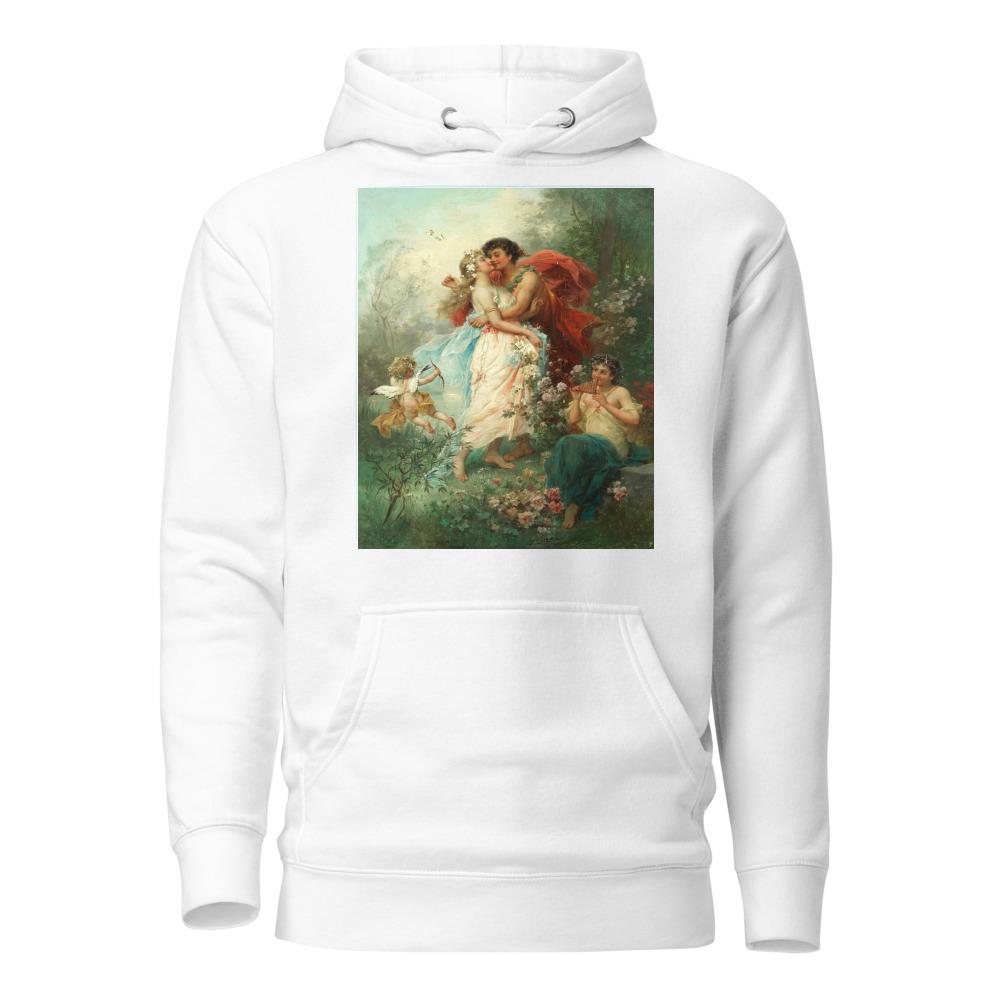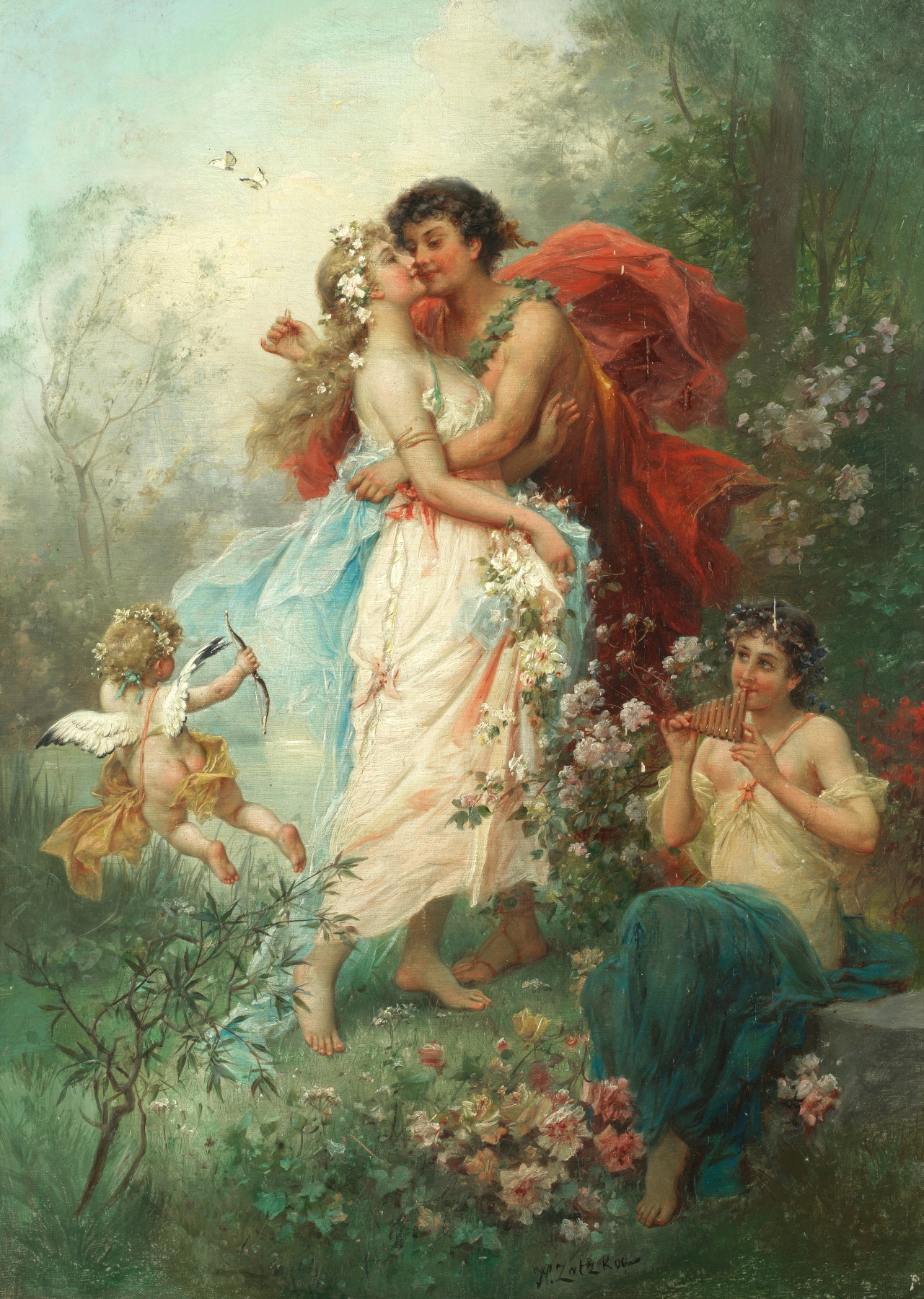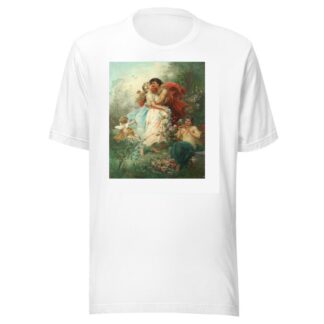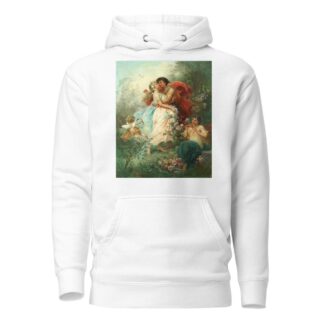Description
Oath of love by Hans Zatzka printed on a Hoodie
About the Hoodie
Modern fit
It provides a more tailored look than a regular fit
Comfortable
The fabric and fit of this item are extra comfy
Tear-away tag
Easily removable tear-away tag that allows you to add a custom inside label
Premium quality
The product is made from premium, high-quality materials
Classic unisex hoodie with a front pouch pocket and matching flat drawstrings. The 100% cotton exterior makes this hoodie soft to the touch.
- 65% ring-spun cotton, 35% polyester
- Charcoal Heather is 60% ring-spun cotton, 40% polyester
- Carbon Grey is 55% ring-spun cotton, 45% polyester
- 100% cotton face
- Fabric weight: 8.5 oz./yd.² (288.2 g/m²)
- Front pouch pocket
- Self-fabric patch on the back
- Matching flat drawstrings
- 3-panel hood
- Tear-away tag
Hans Zatzka (1859 – 1945)
Hans Zatzka was an Austrian Academic and fantasy painter. He has sometimes been known as P. Ronsard, Pierre de Ronsard, or H. Zabateri, and signed many of his works as Joseph Bernard, J. Bernard, or Bernard Zatzka. The purpose of Zatzka’s vast array of pseudonyms was to avoid penalties of breaking contracts which limited the amount of artwork he could sell. This has caused some art databases to conflate Zatzka’s work under the pseudonym Joseph Bernard with the French sculptor with the same name.
Hans Zatzka was born on 8 March 1859 in Vienna. His father Bartholomaüs was a construction worker, and his mother was Marie Karpischek Zatzka. Between 1877 and 1882, he studied at the Academie des Beaux-Arts, under Christian Griepenkerl, Carl Wurzinger, and Karl von Blaas. Zatzka was able to earn a living through the production of frescoes for churches and other institutions.
In 1885, Zatzka was commissioned to create the ceiling fresco The Naiad of Baden at Kurhaus Baden.
Many of Zatzka’s works were religious paintings and altar pieces dedicated to various churches in Austria. However, he is more known for his paintings of women, fairies, and other fantastical scenes. Often, he would draw inspiration from the works of Richard Wagner and the fairy tales of the Brothers Grimm.
In the late 19th and early 20th century, several pieces by Zatzka were photographed and made into commercial and collectable postcards.
During the 1920s, Zatzka’s style became the decor of choice throughout Europe. In addition, the previous thirty years held a resurgence for Zatzka.





Reviews
There are no reviews yet.